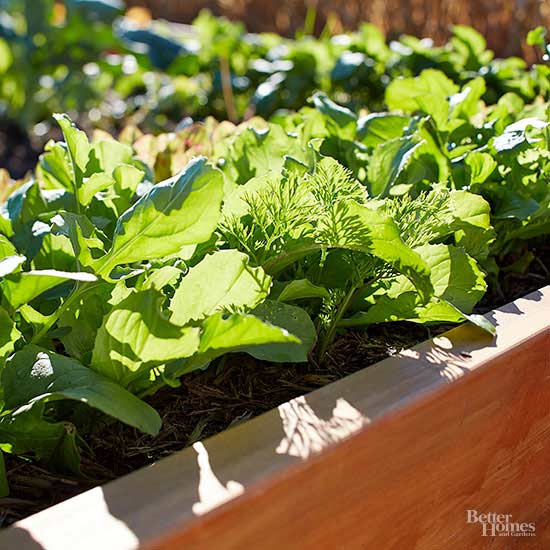






For those of you who can't wait to plant your garden every spring, spinach is a great crop for you. Spinach, a cool-season vegetable, flourishes in early spring or late fall but bolts (flowers go to seed) in the heat of summer.
Wait to plant until the danger of frost is past. Then prepare the spinach bed in well-drained soil in a full sun location. Plant spinach seeds about 1 inch apart in rows 8 to 10 inches wide. When seedlings reach about 2 or 3 inches tall, remove every other one to allow the remaining spinach plants to grow to their full size. Use the thinned out small plants in salads or cooking.
Keep the soil moist but not waterlogged, and remove weeds as soon as you see them. If you wait to pull larger weeds, they may dislodge spinach plant roots.
In late summer to early fall, plant another crop of spinach, which should grow well until frost claims the tender plants.
There are two types of spinach to choose from: savoy, with crinkled leaves, and smooth-leaf spinach, which is easiest to clean. The term baby spinach may refer to certain types of spinach that are bred to have smaller leaves, or it may simply be any spinach harvested when the leaves are small.
continue reading belowThanks to its shallow root structure, spinach is easy to grow in pots. Fill the pot with a soilless potting mix instead of garden soil, which is too heavy. Follow the same spinach seed sowing instructions. Keep the planted container in full sun. Water just enough that the soil is moist but not waterlogged. You may allow the soil to go barely dry before watering again.
There are two ways to harvest spinach. You can snip or pinch off the outer leaves on each stalk as soon as they are big enough to use, as long as you don't take more than half the leaves on the spinach plant at one time. Harvesting with this method allows the plant to continue growing and producing leaves. Or you can harvest the entire spinach plant by cutting it at the base, then removing each leaf individually.
Spinach is one of the most nutrient dense foods. It is fat free, low in calories, high in dietary fiber, high in Vitamins A and C, and a good source of iron, folate, and magnesium.
Use spinach raw in any salad that calls for lettuce or other salad greens. It is a great ingredient for smoothies, where it adds almost no flavor but increases nutrition. Spinach is also great in stir fries, soups, stews, dips, omelets and quiches, and with potatoes.
Learn the basics of cooking spinach
Copyright © www.100flowers.win Botanic Garden All Rights Reserved